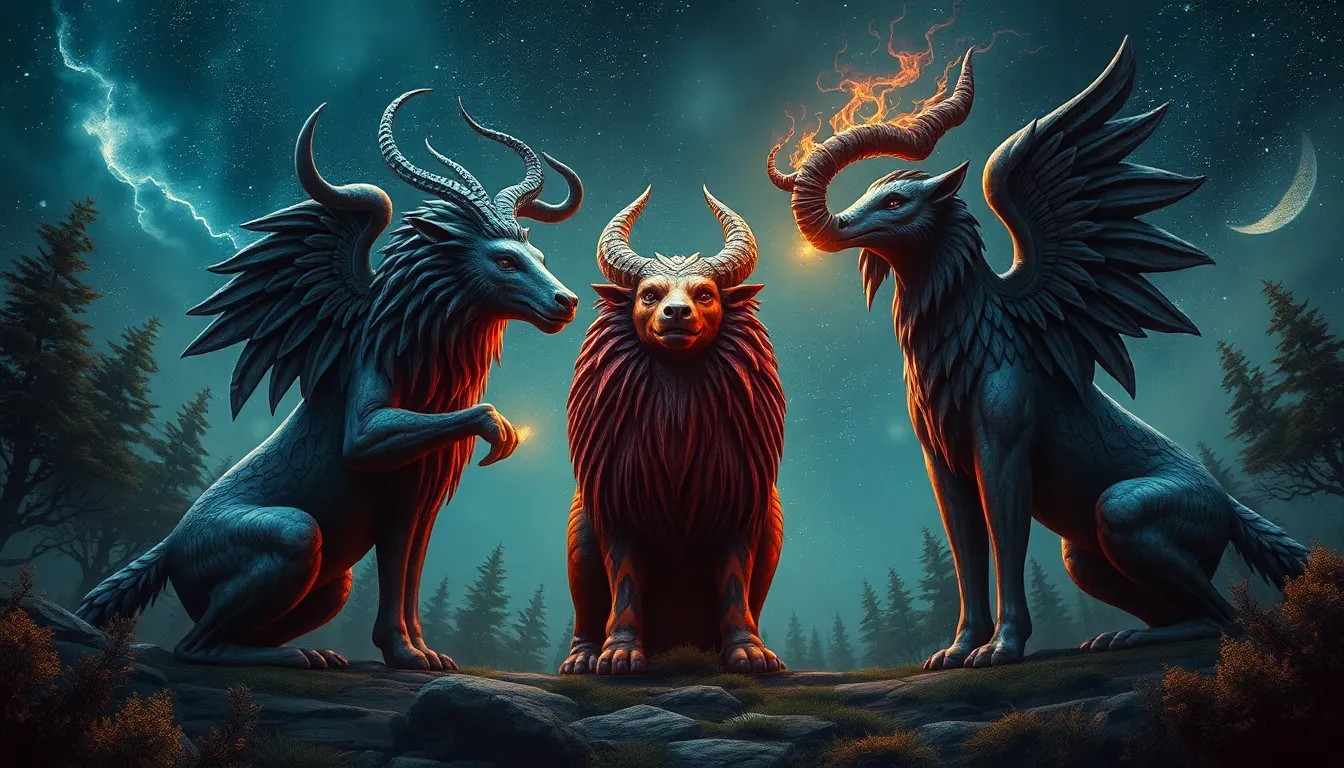Totemic Ties: How Sacred Animals Connect Us to Our Ancestors
Introduction: Understanding Totemic Connections
Totemism is a belief system that establishes a spiritual connection between individuals or groups and particular animals, plants, or other natural elements. This connection is often viewed as a form of kinship, where the totem serves as a symbol of identity, protection, and guidance. Across various cultures, totemism has played a significant role in shaping social structures, spiritual practices, and the understanding of one’s ancestry.
Sacred animals, as totems, are considered embodiments of ancestral spirits, serving as links between the living and their forebears. They carry the wisdom, traits, and characteristics attributed to the ancestors, fostering a sense of belonging and continuity within communities.
The Concept of Totems: A Historical Perspective
The origins of totemism can be traced back to Indigenous cultures around the world, where it manifested in diverse and rich traditions. Anthropologists have documented totemic practices among Native American tribes, Aboriginal Australians, and various African cultures, among others. Each group has developed its unique relationship with totemic animals, influenced by its environment, history, and spiritual beliefs.
Historically, totemic practices have been evident in:
- Native American Tribes: Many tribes, such as the Ojibwe and the Haida, have totem poles that depict ancestral spirits and significant animals.
- Australian Aboriginal Cultures: Dreamtime stories often feature animals as ancestral beings that shape the land and its peoples.
- African Tribes: In cultures like the Yoruba, animals are revered as messengers of the gods, embodying spiritual significance.
Sacred Animals and Their Symbolism
Common totem animals carry deep symbolism and meaning, often reflecting the values, characteristics, and lessons that communities seek to embody. Some prominent examples include:
- Wolves: Often seen as symbols of loyalty, family, and instinct, wolves represent the importance of community and the bonds that tie individuals together.
- Bears: Bears symbolize strength, courage, and introspection. They are often associated with healing and nurturing qualities.
- Eagles: Eagles are viewed as messengers between the earthly realm and the spirit world. They embody freedom, vision, and the pursuit of higher knowledge.
The spiritual and cultural significance of these animals extends beyond mere representation; they serve as guides for behavior, ethics, and community dynamics.
Mythology and Folklore: Animals as Ancestral Guides
Throughout history, totem animals have played pivotal roles in mythology and folklore, often serving as ancestral guides or protectors. Numerous cultures have rich narratives that feature these animals, embedding them into the very fabric of their heritage.
Some notable stories include:
- The Wolf in Native American Folklore: Many tribes recount the story of the wolf as a teacher, embodying the values of loyalty and survival.
- The Dreamtime Stories of Australia: These narratives often include totemic animals like the kangaroo and the emu, teaching lessons about the land and the interconnectedness of life.
- The Egyptian God Anubis: Represented by a jackal, Anubis guided souls to the afterlife, emphasizing the spiritual significance of animals in human existence.
These narratives not only entertain but also preserve cultural heritage and ancestral wisdom, passing down important lessons through generations.
Rituals and Practices Involving Totemic Animals
Rituals honoring totem animals are integral to many cultures, serving as expressions of gratitude, reverence, and connection to one’s ancestors. Common practices include:
- Ceremonies: Rituals that involve invoking the spirit of the totem animal through prayers, offerings, and dances.
- Dances: Traditional dances that mimic the movements of totem animals, celebrating their characteristics and honoring their presence.
- Art: Artistic representations of totem animals in carvings, paintings, and textiles serve as visual reminders of their significance.
These practices not only foster a connection to ancestors but also reinforce cultural identity within communities, instilling a sense of pride and belonging.
Modern Interpretations of Totemic Relationships
In contemporary spirituality, there has been a resurgence of interest in totemism, as individuals and communities seek to reconnect with their ancestral ties. This revival often emphasizes personal empowerment and ecological awareness.
Case studies of revitalized totemic practices include:
- Urban Indigenous Communities: Many Indigenous peoples in urban areas are reclaiming their totemic identities, organizing events that honor their cultural heritage.
- Spiritual Workshops: Workshops centered on discovering personal totems and integrating them into modern life, promoting self-growth and introspection.
Psychological and Emotional Connections to Sacred Animals
Connecting with totem animals can profoundly impact personal identity and self-perception. The psychological benefits of these connections include:
- Enhanced Self-Understanding: Individuals often find clarity in their traits and behaviors by identifying with their totem animals.
- Emotional Healing: Engaging with totemic symbols can provide comfort and healing during difficult times, fostering resilience.
These connections often lead to a deeper understanding of oneself and a renewed appreciation for ancestral heritage.
Challenges and Misunderstandings in Totemic Practices
Despite the rich history and significance of totemism, challenges persist in its modern interpretations. Issues of cultural appropriation and misrepresentation often arise, particularly when outsiders adopt totemic symbols without understanding their cultural context.
It is crucial to engage respectfully with Indigenous practices, recognizing the importance of:
- Education: Learning about the cultural significance of totems before incorporating them into personal practices.
- Respect: Honoring the traditions and practices of Indigenous peoples without commodifying their beliefs.
The Future of Totemic Connections: Bridging Past and Present
Totemic ties can inform modern-day ecological and spiritual movements, highlighting the interconnectedness of all living beings. Opportunities for cross-cultural dialogue and understanding are essential in fostering mutual respect and learning.
As society increasingly values ecological sustainability and spiritual connection, totemic practices can provide valuable insights into living harmoniously with nature and honoring our ancestors.
Conclusion: Embracing Our Ancestral Ties Through Sacred Animals
The enduring legacy of totemism reminds us of the deep connections we share with our ancestors and the natural world. By exploring our own totemic connections, we honor the wisdom of those who came before us and strengthen our cultural identities.
As a call to action, readers are encouraged to delve into their ancestral histories, discover their own totems, and engage with the rich traditions that connect us to the past and guide us into the future.


